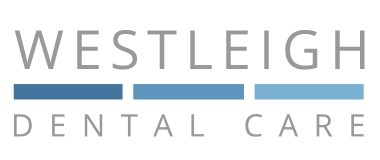Toothbrushing
- Teeth and gums should be brushed twice a day. Once in the morning, and once at night before bed. This can help stop tooth decay and keep the gums healthy.
- Brush for Two Minutes: The NHS recommends brushing your teeth for two minutes twice a day. You can use a timer or a fun song to help your child keep track of time.
- Use a Soft-Bristled Toothbrush: A soft-bristled toothbrush is gentle on your child’s gums and teeth. Avoid using a toothbrush that is too hard, as it can damage the gums.
- Use a Small Amount of Fluoride Toothpaste: The NHS recommends using a pea-sized amount of fluoride toothpaste for children ages 3 to 6. For children under 3, use a smear of toothpaste the size of a grain of rice.
- Brush All Surfaces: Be sure to brush all surfaces of your child’s teeth, including the front, back, and chewing surfaces. Don’t forget to brush their tongue as well, as bacteria can accumulate there.
- Angle the Brush Correctly: Place the toothbrush at a 45-degree angle to the gums and brush in small, circular motions. This helps to remove plaque from the gumline and between teeth.
- Floss Daily: Flossing is essential for reaching the areas between teeth that a toothbrush cannot. Start flossing when your child has teeth that are touching each other.
- Don’t rinse: Spit out the toothpaste but don’t rinse with water as this will remove the fluoride which helps protect the teeth
Tips
- Use disclosing tablets to show your child where they might be missing plaque.
- It’s best to help or watch your child brush their teeth until they are at least 7 years old.
Toothpaste
- Children 0 to 3 years old should use toothpaste with a fluoride level of at least 1,000ppm. If your child is at risk of tooth decay, your dentist may recommend toothpaste with a fluoride level of 1,350ppm to 1,500ppm.
- Children over 3 years old should use toothpaste with a fluoride level of 1,350ppm to 1,500ppm which is the same level as in adult toothpastes.
Mouthwash
- Children over 6 years old can use a fluoride mouthwash (0.05%). Make sure to use this at a different time to toothbrushing (for example, after lunch or after school). It is best to supervise the use of mouthwash to ensure the child doesn’t swallow it or choke.
Diet
Teeth start to decay after having food or drink that has sugar in. It is how often your child has sugary foods and drinks that causes tooth decay. It is not the amount of sugary foods they have. Try to only give sugary foods to your child at mealtimes, and try to only give them water to drink. If your child wants fizzy drinks or flavoured water on a special occasion, only give these at mealtimes. You should not put sweetened drinks in bottles or baby feeders.
Brush your child’s teeth after they have had milk to drink. This includes breastmilk, formula, dairy milk and non-dairy milk. Do not let your child go to sleep with milk left in their mouth. Milk can cause tooth decay if it is left on the teeth overnight.
Tooth-friendly snacks and drinks
- water
- fresh fruit, for example, apples, pears, bananas
- fresh vegetables, for example, carrot sticks, cucumber
- cheese
- breadsticks
- buttered toast
- plain crackers or rice cakes
- savoury sandwiches
Dental Visits
- Visit your dentist at least twice a year. At around 6 years old, children’s first adult teeth grow at the back of their mouth. Ask your dentist about fissure sealants, which are put on your child’s back teeth to help stop tooth decay. The dentist can also use fluoride varnish to lower the risk of tooth decay. This can be put on by your dentist at least every 6 months for adult teeth.
- Make their dental routine and visit to the dentist fun and get their reward sticker for a job well done!


